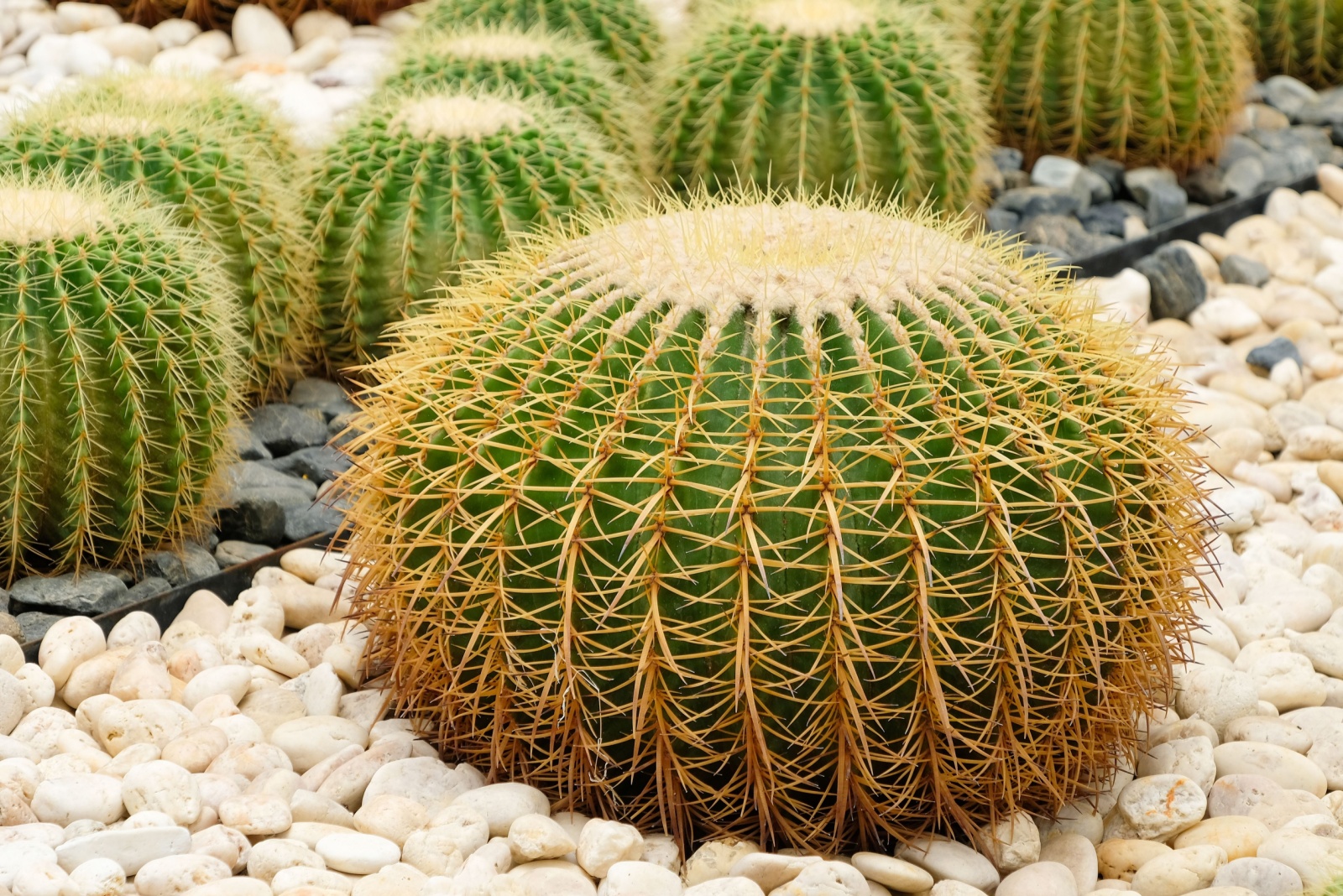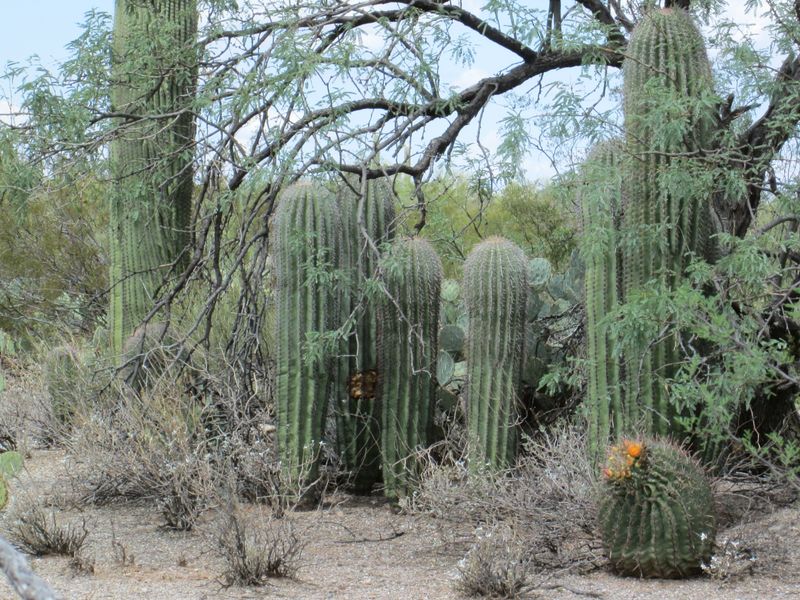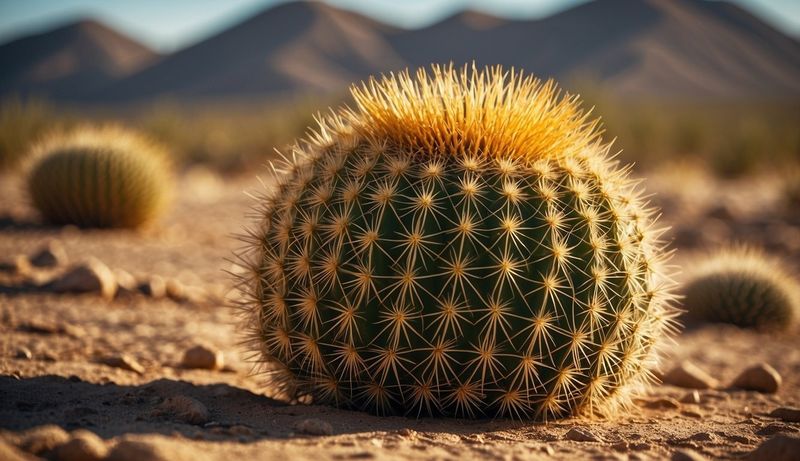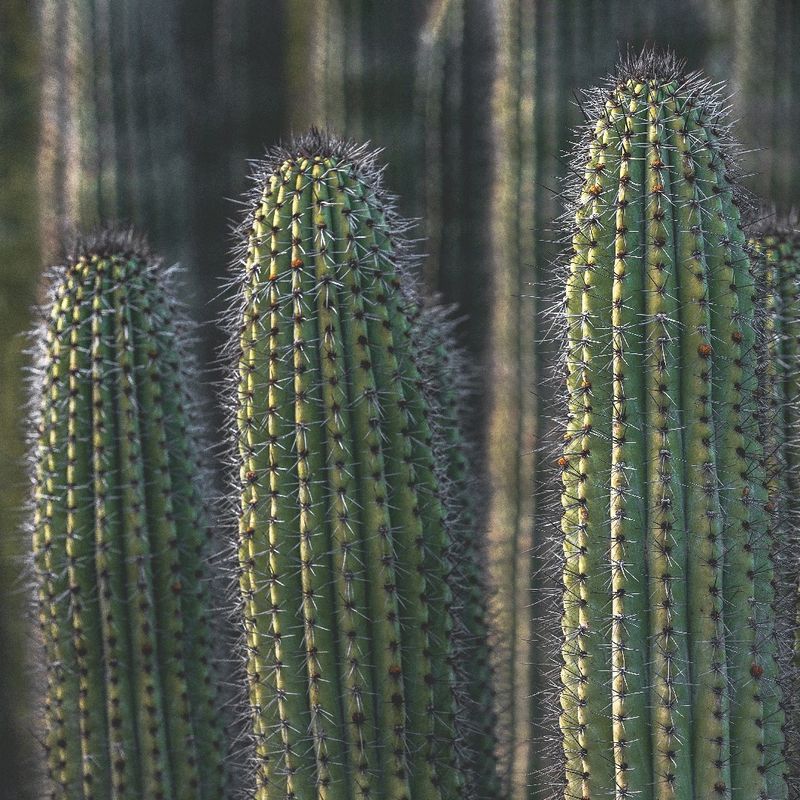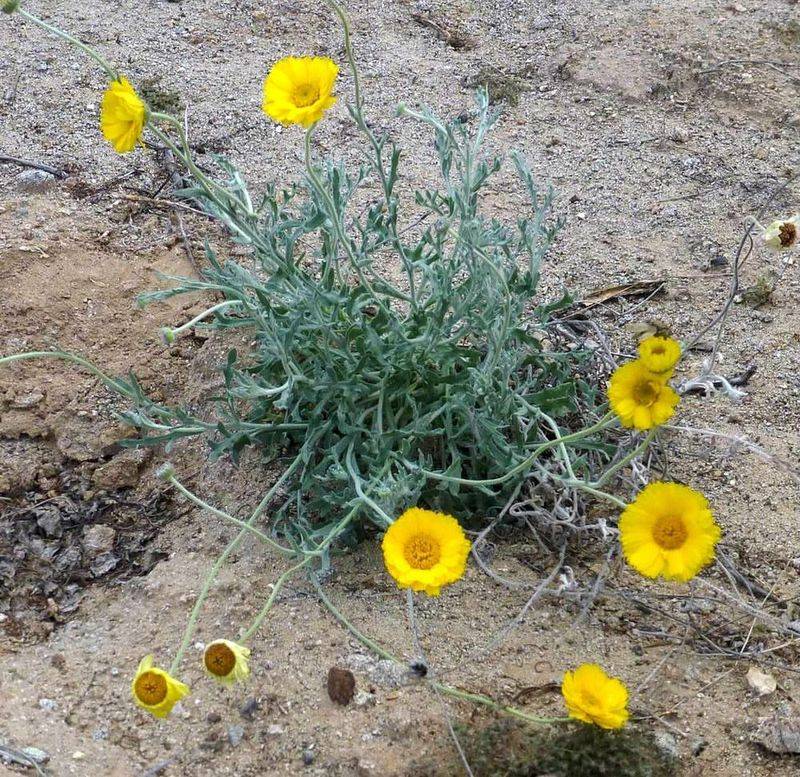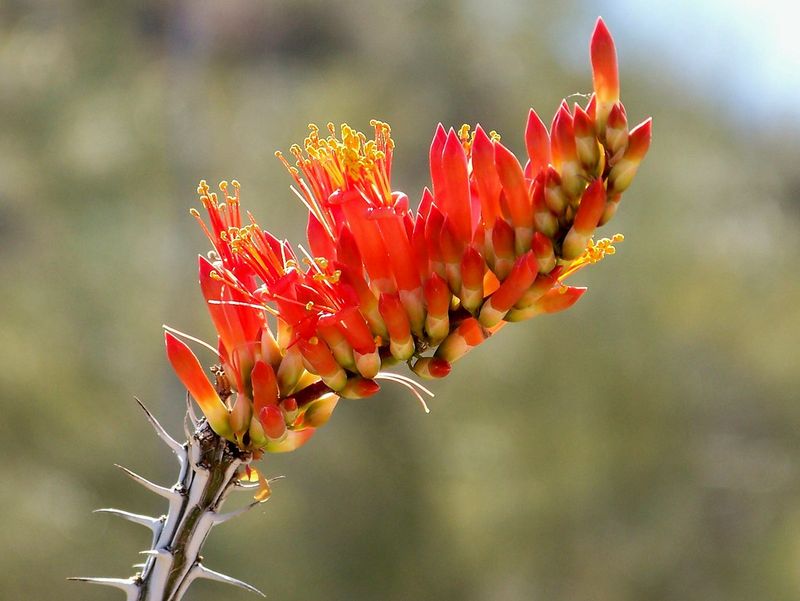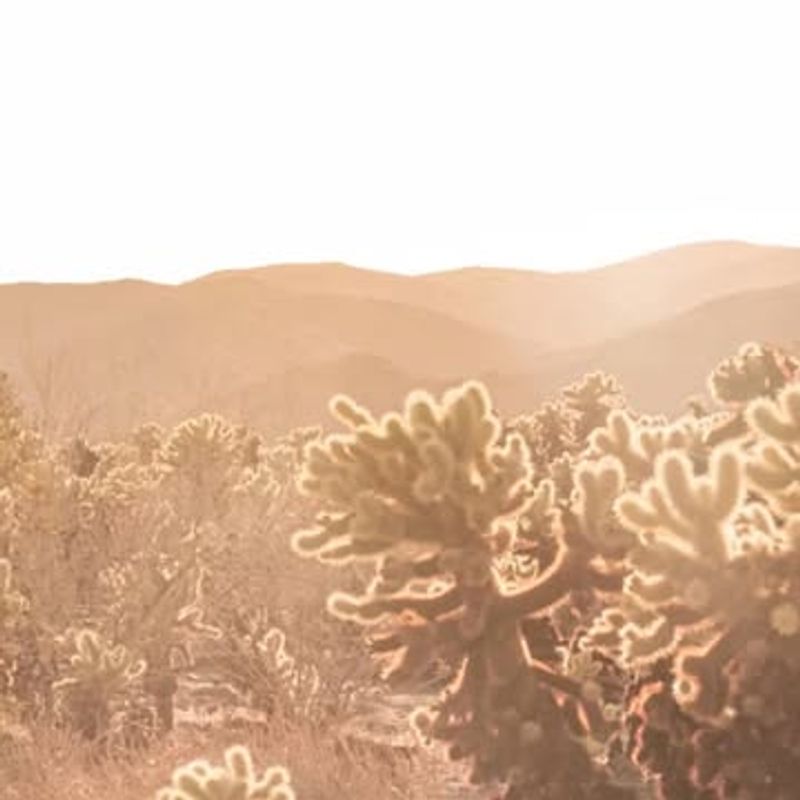Set in the heart of Phoenix, the Desert Botanical Garden is a vibrant tribute to the Sonoran Desert’s plant life. Spread across 140 acres, it’s home to thousands of cacti, trees, and wildflowers that flourish in the heat. It’s a place where resilience blooms in every direction.
Visitors wander winding paths lined with striking displays of desert beauty. From towering saguaros to delicate blooms, each plant tells a story of survival and adaptation. The landscape surprises with bursts of color and texture at every turn.
More than just a garden, it’s a living classroom where nature and science meet. Conservation efforts and educational programs highlight the importance of protecting these ecosystems. It’s a desert experience that’s both inspiring and unforgettable.
1. Majestic Saguaro: The Desert’s Towering Giant
Standing tall like silent sentinels throughout the garden, saguaros can reach heights of 40-60 feet over their 150-200 year lifespan. These iconic symbols of the American Southwest don’t even grow their first arm until they’re about 75 years old!
The garden’s Saguaro Loop Trail offers spectacular views of these giants in their natural habitat. Many visitors are surprised to learn that saguaros only grow naturally in the Sonoran Desert region.
During late spring, look for the crown of creamy white flowers that bloom at night and close by the following afternoon—a brief but beautiful display that attracts bats, birds, and insects.
2. Golden Barrel Cactus: Nature’s Perfect Sphere
Nicknamed ‘mother-in-law’s cushion’ for obvious reasons, these perfectly round cacti create striking geometric patterns throughout the garden’s collections. Their bright golden spines catch the sunlight, creating a glowing effect against the desert landscape.
Native to Mexico but thriving in Arizona’s similar climate, these endangered plants are far more common in cultivation than in the wild. The garden’s conservation efforts help preserve this increasingly rare species.
Look for impressive clustering displays where dozens of barrels grow together, forming living sculptures that can be hundreds of years old. Each spine arrangement follows the Fibonacci sequence—a fascinating example of mathematics in nature.
3. Organ Pipe Cactus: Columns Of Desert Architecture
Named for its resemblance to the pipes of a church organ, this remarkable cactus creates a dramatic vertical accent in the garden’s Mexican collection. Multiple stems rise from a single base, creating a clustered column effect unlike any other desert plant.
Few visitors realize these cacti can live over 150 years. At the Botanical Garden, you’ll find mature specimens displaying their characteristic form, which develops slowly as the plant ages.
Summer evenings bring spectacular white flowers that open at night and close by morning. This nocturnal blooming pattern evolved to attract bat pollinators that help these plants reproduce in their native Sonoran Desert habitat.
4. Prickly Pear: Edible Desert Wonder
Beyond their distinctive paddle-shaped pads, prickly pears offer a surprising culinary connection to the desert. The garden’s ethnobotanical trail highlights how indigenous peoples harvested both the fruit (called ‘tunas’) and the pads (nopales) as important food sources.
Spring brings a spectacular show as these cacti erupt with vibrant yellow, orange, or magenta flowers. Following the blooms, colorful fruits develop—ranging from deep purple to bright red depending on the variety.
The garden features multiple species showing the incredible diversity within this family. Some sprawl along the ground while others form tree-like structures reaching 15 feet tall, demonstrating the plant’s remarkable adaptability to different desert microenvironments.
5. Desert Marigold: Sunshine After Rain
Scattered throughout the garden’s wildflower areas, these cheerful yellow blooms create bright splashes of color against the desert backdrop. Their silvery-green foliage provides a beautiful contrast to the golden flowers that seem to float above the plant.
What makes desert marigolds remarkable is their opportunistic blooming cycle. After even minimal rainfall, they can burst into flower within days—a survival strategy perfectly suited to unpredictable desert precipitation patterns.
The garden’s spring wildflower exhibits showcase these natives alongside other desert bloomers. Their drought resistance and prolific seeding make them perfect examples of how desert plants maximize limited resources while creating stunning seasonal displays.
6. Ocotillo: The Desert’s Flaming Spears
Among the garden’s most dramatic plants, ocotillos appear as bundles of leafless spiny stems reaching skyward like a bouquet of thorny wands. After rain, a remarkable transformation occurs—tiny green leaves rapidly emerge along the stems, turning these skeletal structures into lush, living plants.
The garden’s mature specimens reach heights of 15-30 feet, creating an otherworldly forest effect. During spring, brilliant red tubular flowers crown each stem tip, attracting hummingbirds and providing a striking contrast against the blue Arizona sky.
Not actually a cactus but a drought-deciduous shrub, ocotillos demonstrate one of the desert’s most effective survival strategies—the ability to appear dormant during dry periods and spring to life with remarkable speed when water becomes available.
7. Cholla Cactus Garden: Nature’s Glowing Sculptures
The garden’s dedicated Cholla Forest showcases these fascinating cacti known for their seemingly translucent spines that capture and diffuse sunlight. Early morning and late afternoon visits reward photographers with a magical glow as light filters through the dense spine clusters.
Despite their delicate appearance, chollas have earned the nickname ‘jumping cactus’ for their tendency to have segments break off and attach to passing animals or humans. The garden’s pathways keep visitors at a safe but impressive viewing distance.
Spring brings unexpected color as many cholla varieties produce delicate flowers in shades of green, yellow, pink, or purple. The garden’s collection includes both tree-like specimens reaching 15 feet tall and low-growing varieties that form dense, sculptural colonies.

